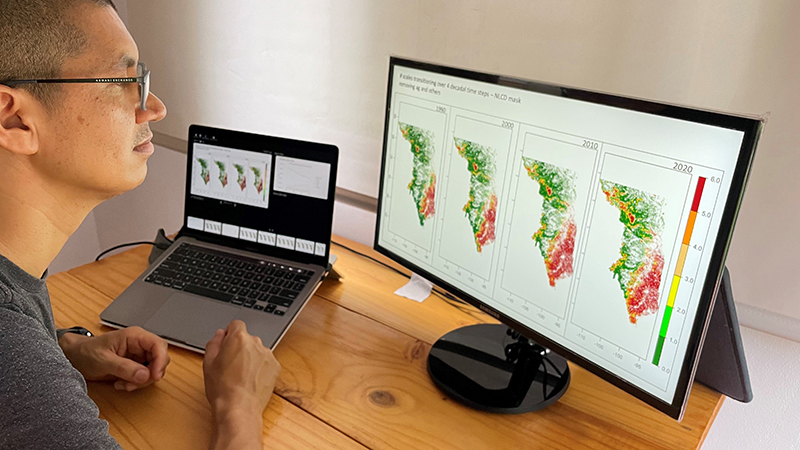
By Ronica Stromberg
University of Nebraska–Lincoln researchers released a decision-making tool this month to guide land managers and owners on the best use of time and money to resist, accept or direct tree invasions on grasslands. In the July 2025 issue of Journal of Environmental Management, they and University of Montana–Missoula researchers described how they adapted a tool used in managing ecosystems, the Resist-Accept-Direct Framework, for use in grasslands.
Rheinhardt Scholtz, the main author of "Reconciling scale using the Resist-Accept-Direct (RAD) Framework to improve management of woody encroachment in grasslands," said trees like redcedars pose slow but serious threats to grasslands. He and the other researchers used funding from the federal government’s Established Program to Stimulate Competitive Research to develop ways to gauge, track and tackle the growing problem.
"Now we realize that the threat of woody encroachment is way larger than we could think,” Scholtz said. “We would stand on a landscape, and think, 'I don't see any trees around. We're safe.' But as you start walking around, you see little seedlings, and they start growing and growing. All of a sudden—boom!—you've got these large, seed-bearing adults now spreading seeds all around, and the threat becomes very real and the problem gets out of control very fast."
Redcedars encroaching on grasslands threaten the livelihood of ranchers and the beef supply. Such trees harm grasslands in many ways, like reducing wildlife and available water and increasing wildfire risks and vector-borne diseases. Over the past few decades, entire grasslands in the United States have flipped to woodlands. The trees now threaten the Nebraska Sandhills, one of the world’s last seven largest continuous grasslands, as identified by Scholtz and Dirac Twidwell, a University of Nebraska–Lincoln agronomy and horticulture professor.
Read more of the story at https://snr.unl.edu/aboutus/what/newstory.aspx?fid=1264